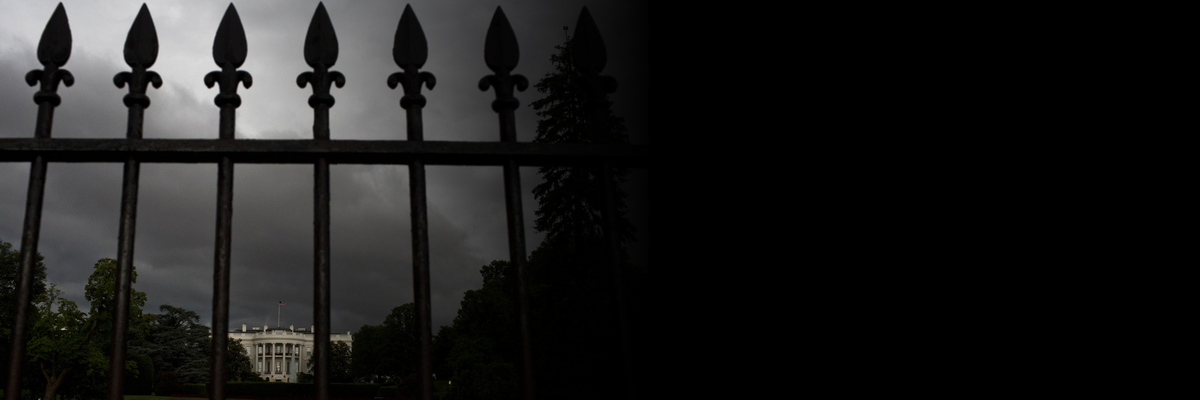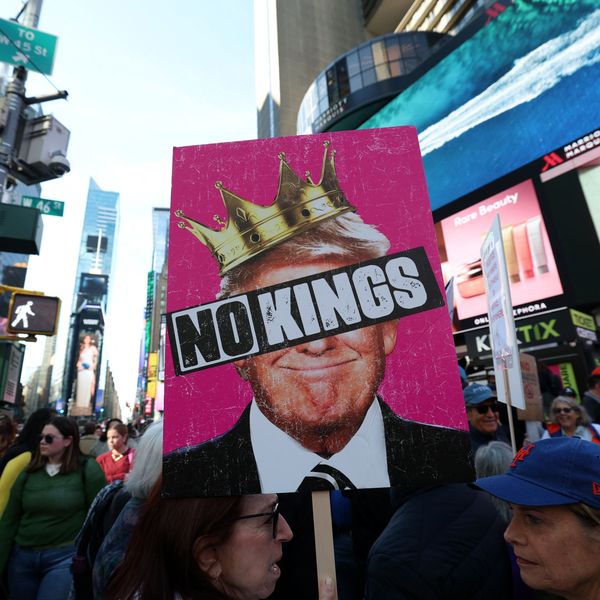If the Covid-19 pandemic and the killings of unarmed Black people by the police have made visible the underlying inequalities of American life, both have been met with off-the-shelf analyses of, first, what's produced those inequalities and, second, how to eliminate them. The problem (thought to be so ingrained in American life that it's sometimes called America's original sin) is racism; the solution is anti-racism. And the confidence in both the diagnosis and the cure is so high that it's produced action everywhere from BLM protesting in the streets to the Mississippi legislature voting to take down its flag to corporate boardrooms pledging literally billions of dollars--all with the admirable goal of ending white supremacy.
"It is practically impossible to imagine a serious strategy for winning the kinds of reforms that would actually improve black and brown working people's conditions without winning them for all working people and without doing so through a struggle anchored to broad working-class solidarity."
All this takes place, of course, against the backdrop of an economy that--for white people as well as for black--has become more and more unequal over the last half century. The Gini index (a measure of inequality in which zero means we all have the same while one means one person has everything) has gone from .397 in 1967 to .485 today. (By contrast, the worst current score in Europe is basically what ours was a half century ago.) And most of the people--at least on the left--who worry about racial disparity no doubt believe that inequality between classes is a problem too. In fact, they may well believe that attacking racism is a step also in the direction of attacking the gap between the top decile of American wealth and everybody else.
But they are mistaken. In fact, not only will a focus on the effort to eliminate racial disparities not take us in the direction of a more equal society, it isn't even the best way of eliminating racial disparities themselves. If the objective is to eliminate black poverty rather than simply to benefit the upper classes, we believe the diagnosis of racism is wrong, and the cure of anti-racism won't work. Racism is real and anti-racism is both admirable and necessary, but extant racism isn't what principally produces our inequality and anti-racism won't eliminate it. And because racism is not the principal source of inequality today, anti-racism functions more as a misdirection that justifies inequality than a strategy for eliminating it.
"If the objective is to eliminate black poverty rather than simply to benefit the upper classes, we believe the diagnosis of racism is wrong, and the cure of anti-racism won't work."
What makes racism look like the problem? The very real racial disparities visible in American life. And what makes anti-racism look like the solution? Two plausible but false beliefs: that racial disparities can in fact be eliminated by anti-racism and that, if they could be, their elimination would make the U.S. a more equal society. The racial wealth gap, because it is so striking and commonly invoked, is a very good, not to say perfect, illustration of how, in our view, both the problem and solution are wrongly conceived.
It is well known by now that whites have more net wealth than blacks at every income level, and the overall racial difference in wealth is massive. Why can't anti-racism solve this problem? Because, as Robert Manduca has shown, the fact that Blacks were over-represented among the poor at the beginning of a period in which "low income workers of all races" have been hurt by the changes in American economic life has meant that they have "borne the brunt" of those changes. The lack of progress in overcoming the white/black wealth gap has been a function of the increase in the rich/poor wealth gap.
In fact, if you look at how white and Black wealth are distributed in the U.S., you see right away that the very idea of racial wealth is an empty one. The top 10% of white people have 75% of white wealth; the top 20% have virtually all of it. And the same is true for black wealth. The top 10% of black households hold 75% of black wealth.
That means, as Matt Bruenig of the People's Policy Project recently noted, "the overall racial wealth disparity is driven almost entirely by the disparity between the wealthiest 10 percent of white people and the wealthiest 10 percent of black people." This is not to say there aren't differences almost all the way down the line: poor black people are in the main even poorer than poor white people. But it does mean that when you tell the 80 percent of white people who have less than 15 percent of white wealth that the basic inequality in the U.S. is between black and white, they know you are wrong. More tellingly, if you say the same thing to the 80 percent of black people in the same position, they also know you're wrong. It's not white people who have white wealth; it's the top ten percent of whites, plus some Blacks and Asians. The wealth gap among all but the wealthiest blacks and whites is dwarfed by the class gap, the difference between the wealthiest and everyone else across the board.
"The wealth gap among all but the wealthiest blacks and whites is dwarfed by the class gap, the difference between the wealthiest and everyone else across the board."
Trying to solve the problem of racial disparity thus has nothing to do with producing economic equality; rather, it replaces the goal of equality with the goal of proportional inequality. The disparitarian ideal is that blacks and other nonwhites should be represented on every rung on the ladder of economic hierarchy in rough proportion to their representation in the general population. Instead of worrying about inequality, it worries about the inequalities that have been produced by racism. Obviously, this does nothing for poor white people. But, also obviously, it does nothing for most poor Black people. In its insistence that proportionality is the only defensible norm and metric of social justice, anti-racist politics rejects universal programs of social-democratic redistribution in favor of what is ultimately a racial trickle-down approach according to which making more black people rich and rich black people richer is a benefit to all black people.
Complaints about disproportionality are neoliberal math. They tell us that the increasing wealth of the one percent would be okay if only there were more black, brown, and LGBTQIA+ billionaires. And the fact that anti-racism and anti-discrimination of all kinds would validate rather than undermine the stratification of wealth in American society is completely visible to those who currently possess that wealth--all the rich people eager to embark on a course of moral purification that will make them less racist but with no interest whatsoever in a politics that would make them less rich.
As generations of black proponents of social democracy understood clearly, it is practically impossible to imagine a serious strategy for winning the kinds of reforms that would actually improve black and brown working people's conditions without winning them for all working people and without doing so through a struggle anchored to broad working-class solidarity. Our further point is that even if it were possible, it would be wrong. A society where making black and white people equal means making them equally subordinate to a (mainly white but, really, what does it matter?) ruling class is not a more just society, just a differently unjust one. That's the trouble with disparity.
A longer version of this essay is scheduled for publication at Nonsite.org later this month.



